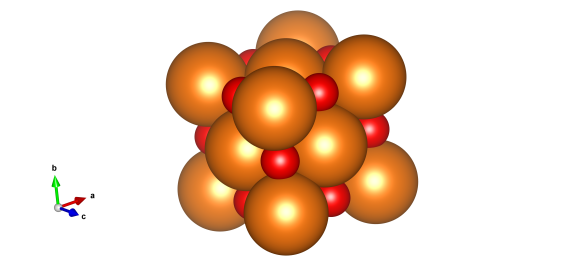Bright spark – Magnesium Oxide
Hello! Helen here (coordinator of crystallography 365). It's been a whirlwind few weeks of travelling and I'm so grateful for all the positive and constructive feedback I got about the blog from the IUCr Congress in Montreal. We're now 230 structures in!
What does it look like?

Magnesium oxide: the orange atoms are magnesium and red are oxygen. Image generated by the VESTA (Visualisation for Electronic and STructural Analysis) software http://jp-minerals.org/vesta/en/
What is it?
Do you remember that day in science class when your teacher (or maybe you did it yourself) lit a small strip of magnesium with a bunsen burner? I do, and I remember how my mind lit up as the small piece of metal foil was transformed into a sparkly cascade. Those of us who didn’t look away ended up a little dazed – and probably didn't notice the small amount of white powder left. That white powder was the product of the pure magnesium reacting with the oxygen in the atmosphere – Magnesium Oxide.
The atomic arrangement of that white powder takes up the rock salt structure. But it's held together with stronger bonds, on the basis of the Mg2+ and O2- charge of each of the atoms – they exchange more electrons in their bonding. Chemistry World had a podcast on MgO this week, you can listen to more about it here.
Recent investigations have shown that when compressed enough, magnesium oxide could become a metal. This is the point where the atoms have got so close together that the electrons can flow past each other. This is thought to happen at pressures in the teraPascal range, beyond any pressures in the centre of our Earth. However, the Kepler spacecraft is increasingly identifying 'super Earths', giant silicate planets which would have metallic MgO in their interiors.
Where did the structure come from?
This structure of Magnesium oxide was determined by Broch in 1927, and is #1011116 in the Crystallography Open Database.






